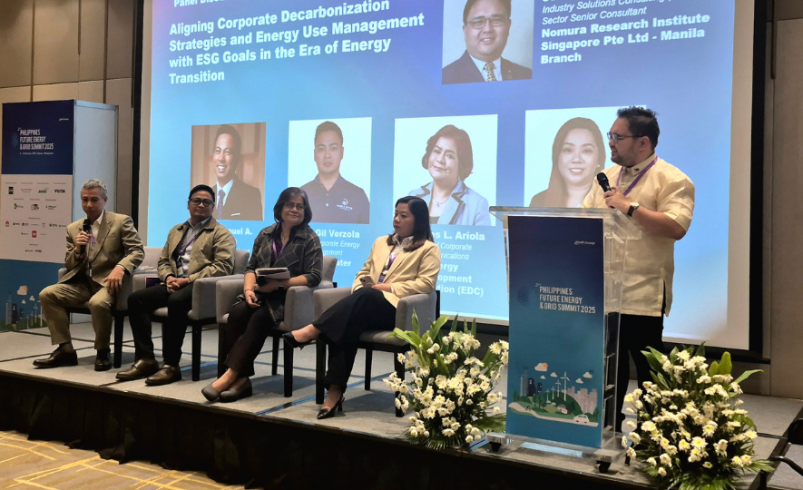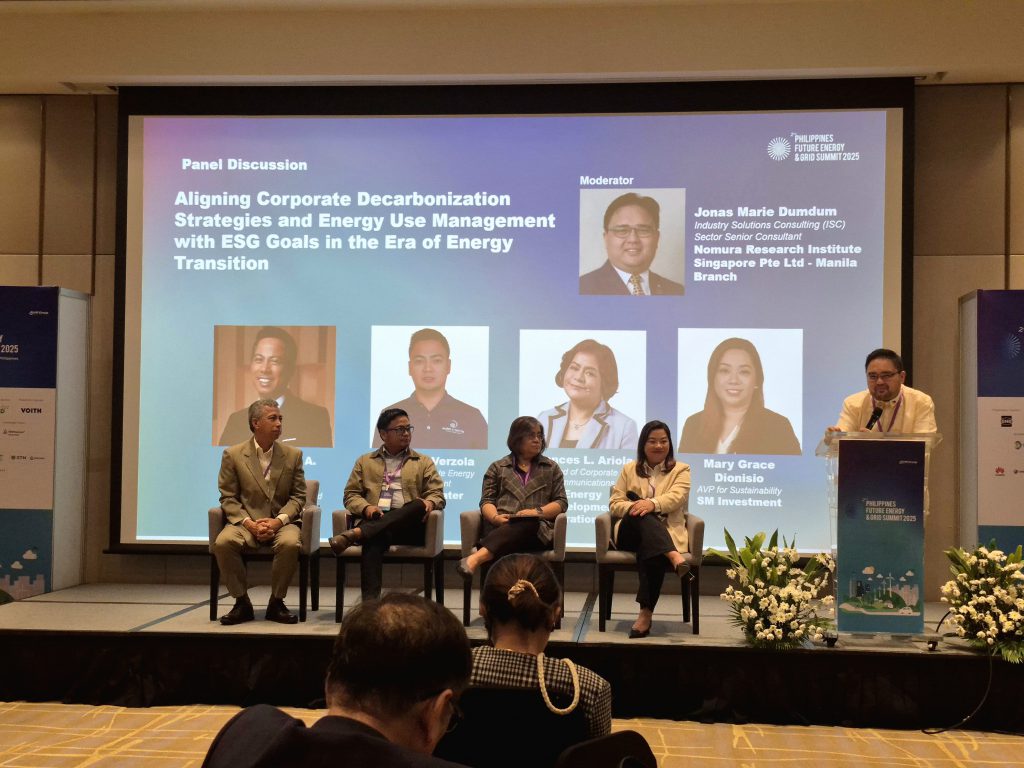Meralco, EDC, SM, and Manila Water map concrete paths to decarbonization
- October 27, 2025
- 0

As global climate goals collide with economic realities, the Philippines’ largest corporations are redefining what decarbonization looks like in practice. Rather than trading in promises, companies like Meralco, SM Investments (SMIC), Energy Development Corporation (EDC), and Manila Water are investing in the physical backbone of a low-carbon economy—rewiring grids, expanding geothermal power, financing renewables, and embedding efficiency across essential services.
At the recently held 2nd Philippines Future Energy and Grid Summit, the four industry leaders detailed how their organizations are turning climate ambition into measurable progress. The panel, titled “Aligning Corporate Decarbonization Strategies and Energy Use Management with ESG Goals in the Era of Energy Transition,” underscored a broader shift: sustainability is no longer an environmental side project, but a driver of operational and financial strategy.
For Meralco, the country’s largest power distributor, the journey to net-zero runs directly through the grid itself.
“We already contracted about more than 2,000 megawatt of renewable energy,” said Jose Manuel A. Santos, Service Industry Lead for Enterprise Commercial & Conglomerates Segment at Meralco. “We’re building the biggest solar farm in the whole world. It is the 3,500 MW MTerra Solar— in Nueva Ecija and Bulacan.”
Once operational, the project will supply clean baseload power to around 2.2 million households — making decarbonization visible not as a promise, but as infrastructure.
He explained that advances in battery systems and grid-forming inverters now allow renewable plants to perform the stabilizing functions once limited to fossil generators. “We could now almost mimic this function of the traditional synchronous generators,” he said.
Santos revealed that Meralco’s decarbonization roadmap is structured across three implementation phases—contracting renewable capacity (2021-2030), adopting new technologies (2031-2040), and driving deep decarbonization (by 2050).

For SMIC, which anchors some of the country’s most climate-exposed assets —from retail complexes to banks—sustainability begins with resilience.
“We need to marry the concept of adaptation and mitigation,” said Mercy Grace Dionisio, AVP for Sustainability at SMIC. “The ability to adapt to climate change can set a strong foundation on which mitigation measures may be built upon.”
SMIC has set a target to
“The malls are aiming to reach 100 megawatt-peak capacity by the end of the year. Currently, they are at 73 MWp,” Dionisio said.
The group has also entered geothermal energy through the Philippine Geothermal Production Company (PGPC), which operates the Tiwi and Makban steam fields. Beyond internal operations, its financial arms—BDO and China Bank—are amplifying the shift by funding clean-energy projects nationwide.
“BDO has funded more than 60 renewable energy projects with a total capacity of more than 2,600 megawatts,” Dionisio added. For SMIC, adaptation isn’t a detour from decarbonization — it’s the foundation that makes it possible.
If Meralco is building the hardware of decarbonization, EDC is building the network that sustains it. The country’s largest geothermal producer and a subsidiary of First Gen is using partnerships to push climate action deeper into supply chains.
EDC leads the Net Zero Carbon Alliance (NZCA), a private-sector coalition launched in 2021 to guide companies toward carbon neutrality by or before 2050. The NZCA provides a framework for measuring and reducing emissions, facilitates capacity building and access to green finance, and brings together over 30 partner organizations across industries.
“We’ve been seeing steady but slow progress,” said Frances Ariola, EDC Head of Corporate Communications and lead convener of the NZCA. “About 30% of the alliance partners have already been disclosing [their greenhouse-gas emissions].”
EDC continues to expand its geothermal base by developing binary plants that harness residual heat from existing wells and deploying battery energy storage systems for grid stability.
Ariola said the company’s approach centers on optimization rather than expansion for its own sake — making existing assets smarter and more efficient. She also pointed to the collective effort required to advance decarbonization across industries.
“Not every company has the manpower or systems to measure Scope 3 emissions,” she explained, referring to greenhouse gas emissions generated within a company’s value chain that it does not directly own or control. “That’s why partnerships and alliances are very important—to share experiences, not just targets.”
Long before ESG became a mainstream metric, Manila Water was quietly embedding sustainability into daily o
“We started our energy efficiency journey way back in 2012,” said Mark Gil Verzola, Director for Corporate Management at Manila Water. “We changed our LED lights, our pumps into more efficient [ones].”
From there, the utility began exploring on-site renewables—solar, small hydro, and even wind—to reduce its operational footprint.
“Once the policy that we lobbied for with ERC will be implemented, we’re looking at probably installing around 30 to 50 megawatt-peak solar,” Verzola said. “We are piloting one in Balaran.”
The director was referring to ongoing regulatory efforts at the Energy Regulatory Commission to make it easier for large power users to install and directly use self-generated renewable energy. These include updates to rules on distributed generation, net-metering, and retail aggregation—measures that would allow utilities like Manila Water to scale up solar across multiple sites more efficiently.
Each of these corporations operates in a different sector — power, property, energy production, and utilities — yet their decarbonization roadmaps converge on a single premise: climate goals only matter when they materialize as assets on the ground. Together, they reflect the maturing face of Philippine corporate sustainability—pragmatic, data-driven, and deeply intertwined with national energy security.
The Philippines’ decarbonization story is now being written not in press releases but in power plants and pipelines. From Meralco’s record-scale solar project to SM’s renewable financing network, EDC’s alliance-driven geothermal expansion, and Manila Water’s efficiency-first operations, the country’s largest corporations are proving that net-zero is no longer a statement of intent—it’s an investment thesis.
What do you think will drive the next big breakthrough in the Philippines’ low-carbon transition — technology, policy, or private-sector leadership?